Please see my postscript posting to my stay at the Hotel Mascagni HERE: HOTEL MASCAGNI ROME - BEWARE!!
My visit to Rome starts with a full day of a "field trip" with our Prof.ssa Giulia CERIANI SEBREGONDI (see my previous posting). I am staying at the Hotel Mascagni, which was recommended to me by a client of mine as being a very "refined and elegant" Roman Hotel and having the advantage of being situated in a prestigiously central location, only a short walk away from Via Veneto, Piazza Barberini and the Spanish Steps. It was completely restored in 2005.
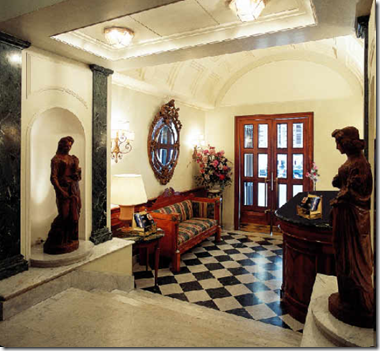
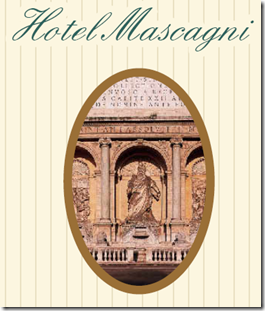
It is described on the Hotel Web-site as: "having a sophisticated flavor, simple and elegant and at the same time extremely soothing and welcoming, thanks to the utmost care that the staff gives to their houseguests."
It was redesigned in collaboration with Lorenzo Bellini who is a prominent Italian architect. His web-site has the slogan "the difference is the italian touch" . In the redesign he has maintained its welcoming and informal atmosphere with a more sophisticated style, with furnishings that inspire a re-fashioned classic style; lighter tones in the common areas that, besides giving space a larger dimension, add more luminosity.
The Rooms are mixed with light and warm colors, like maroon, that bring out the precious woods of the furniture.
The Hotel holds contemporary art pieces like the sculpture in bronze by the famous artist of ” Nouveau Realism” Fernandez Arman, instead, in the rooms, the walls are enriched with a particular collection of photographs of Rome done in black and white.
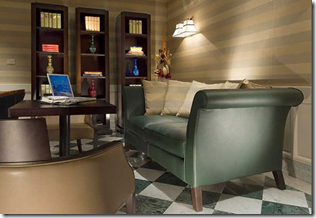
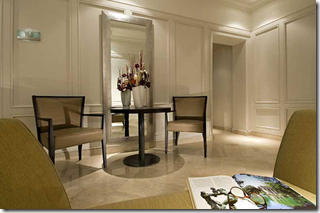
Special care has been dedicated to lighting, that besides creating a play on light that improves the accessories and furnishings in the rooms, it creates the perfect atmosphere for relaxing.
Nearby Points of Interest
Baths of Emperor Diocleziano - Immediate hotel area
American Catholic Church of S. Susanna - Immediate hotel area
Opera Theatre - Immediate hotel area
Quirinale Palace - Immediate hotel area
S. Bernardo's Church - Behind the hotel
Via Veneto - Walking distance
Trevi Fountain This famous fountain is at the juncture of three roads and it was the Roman custom to build handsome fountain at the endpoint of an aqueduct. This aqueducts supplied water to ancient Rome. In 19 BC, supposedly with the help of a virgin, Roman technicians located a source of pure water some 13 km from the city. (This scene is presented on the present fountain's facade). However, the eventual indirect route of the aqueduct made its length some 22 km (14 miles). This Aqua Virgo led the water into the Baths of Agrippa. It served Rome for more than four hundred years.
 A traditional legend holds that if visitors throw a coin into the fountain, they are ensured a return to Rome. Among those who are unaware that the "three coins" of Three Coins in the Fountain were thrown by three different individuals, a reported current interpretation is that two coins will lead to a new romance and three will ensure either a marriage or divorce. A reported current version of this legend is that it is lucky to throw three coins with one's right hand over one's left shoulder into the Trevi Fountain.
A traditional legend holds that if visitors throw a coin into the fountain, they are ensured a return to Rome. Among those who are unaware that the "three coins" of Three Coins in the Fountain were thrown by three different individuals, a reported current interpretation is that two coins will lead to a new romance and three will ensure either a marriage or divorce. A reported current version of this legend is that it is lucky to throw three coins with one's right hand over one's left shoulder into the Trevi Fountain.
Approximately 3,000 Euros are thrown into the fountain each day and are collected at night. The money has been used to subsidize a supermarket for Rome's needy. The fountain is particularly beautiful at night when it is all lit up.
It has been the filmed in many famous movies:
- A scene in the 1953 comedy Roman Holiday with Gregory Peck and Audrey Hepburn
- Three Coins in the Fountain. (1954)
- A scene of drenching Anita Ekberg in Federico Fellini's La dolce vita.
- Several scenes in Sabrina Goes to Rome.
- Bon Jovi's Thank You For Loving Me music video was filmed there.
The Spanish Steps (Italian: Scalinata della Trinità dei Monti) are a set of steps climbing a steep slope between the Piazza di Spagna at the base and Piazza Trinità dei Monti, dominated by Trinità dei Monti, the church that was under the patronage of the Bourbon kings of France, above. The Scalinata is "without a doubt the longest and widest staircase in all Europe.
The monumental stairway of 138 steps was built with French diplomat Étienne Gueffier’s bequeathed funds of 20,000 scudi, in 1723–1725, linking the Bourbon Spanish Embassy to the Holy See.
Piazza Barberini is of course one of the most visited piazzas in Rome where Bernini's glorious Triton Fountain stands. The fountain is one of Bernini's masterpieces in honour of his great protector Urbanus VIII.
The four dolphins carry the coat of arms of the Barberini family while Triton blows a jet of water into the air through a shell held up in his hands.
Nearby you can also see the magnificent Barberini Palace whose facade opens up the palace instead of enclosing it within an impermeable block as most other palaces of this epic were constructed.
Construction of the palace began in the early 17th century for the Barberini Family. Originally started by Carlo Maderno, the construction was taken over by Bernini and assisted by Francesco Borromini in 1629 after Maderno's death.
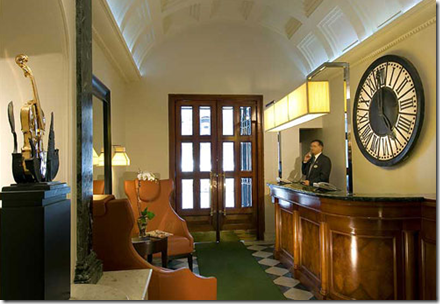

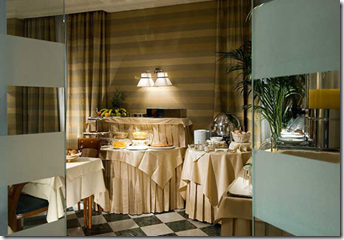
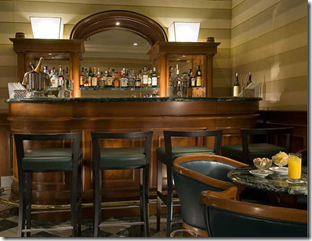
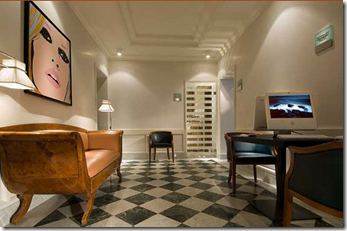
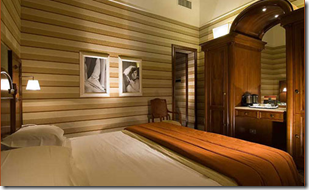
No comments:
Post a Comment